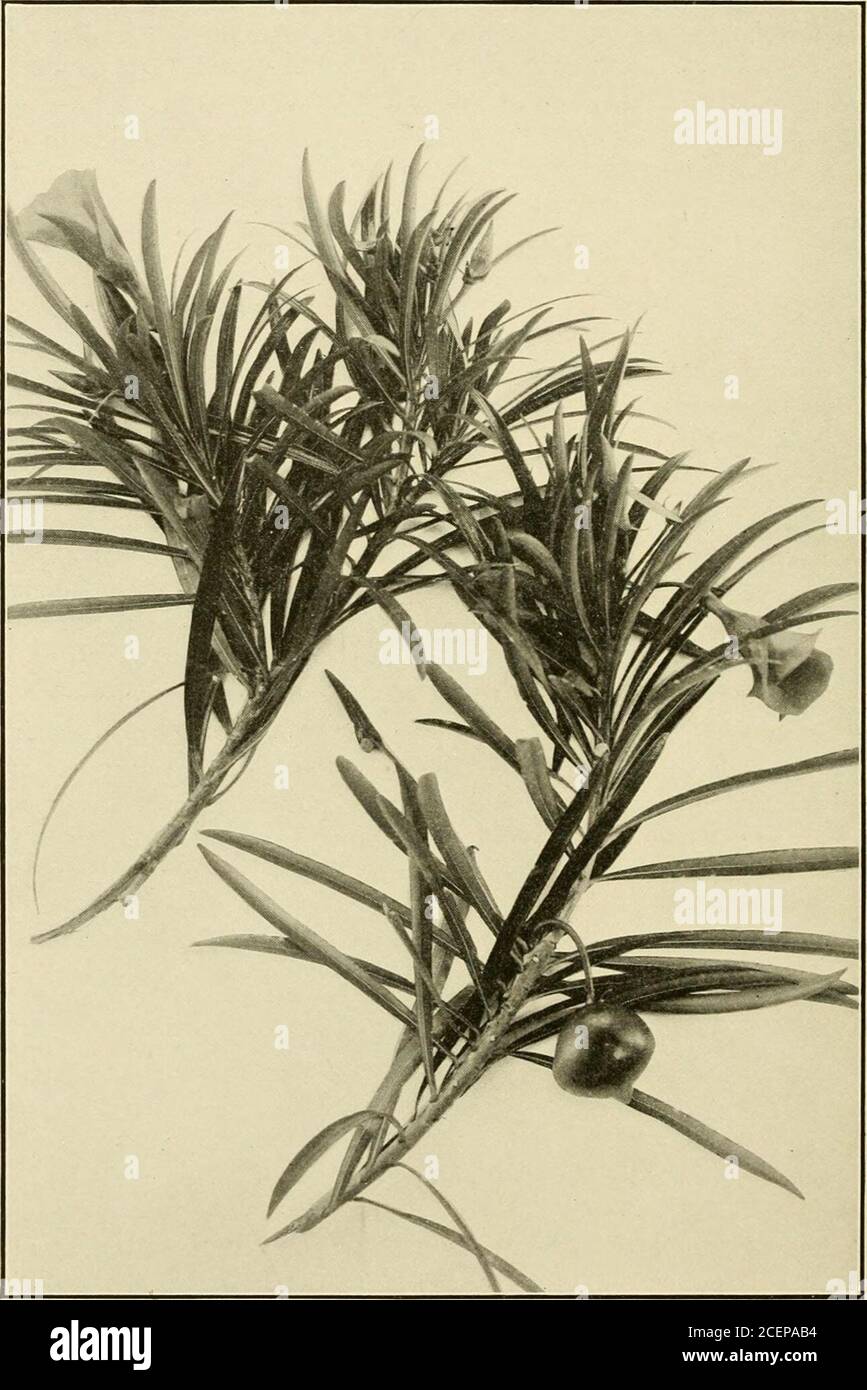. The ornamental trees of Hawaii. ecies under 0. acuminata Trimen, which is,however, an entirely different plant, with yellowish-green, pointedfruits. The species here in cultivation has bright scarlet fruits,which have a violet odor, and is identical with Ochrosia ellipticaLa Bill., described from Australia. This latter name Valeton citesdoubtfully as a synonym of Ochrosia calocarpa, which he figures anddeclares to be polymorphous species. One figure agrees exactly withour plant. Since elliptica is the older specific name it is here re-tained. Ochrosia elliptica La Bill, is a small, milky tre

Image details
Contributor:
Reading Room 2020 / Alamy Stock PhotoImage ID:
2CEPAB4File size:
7.1 MB (355.8 KB Compressed download)Releases:
Model - no | Property - noDo I need a release?Dimensions:
1291 x 1935 px | 21.9 x 32.8 cm | 8.6 x 12.9 inches | 150dpiMore information:
This image is a public domain image, which means either that copyright has expired in the image or the copyright holder has waived their copyright. Alamy charges you a fee for access to the high resolution copy of the image.
This image could have imperfections as it’s either historical or reportage.
. The ornamental trees of Hawaii. ecies under 0. acuminata Trimen, which is, however, an entirely different plant, with yellowish-green, pointedfruits. The species here in cultivation has bright scarlet fruits, which have a violet odor, and is identical with Ochrosia ellipticaLa Bill., described from Australia. This latter name Valeton citesdoubtfully as a synonym of Ochrosia calocarpa, which he figures anddeclares to be polymorphous species. One figure agrees exactly withour plant. Since elliptica is the older specific name it is here re-tained. Ochrosia elliptica La Bill, is a small, milky tree with leaveshorizontally arranged in whorls of three or four or occasionally op-posite, and elliptical in outline. The flowers are cream-colored, fra-grant, and are arranged in corymbose cymes. The fruit, whichconsists of two drupes, is scarlet, each drupe is acuminate and an inchor two long. When in fruit this tree is quite conspicuous, the scarlet drupesbeing handsomely contrasted against the green glossy foliage. Plate LXXII.. Thevetia neriifolia .luss.Flowering and fruiting specimen of the Yellow Oleander or Be-still Tree. Apocynaceae. 181 It is a native of Queensland, Australia, as well as of some of thePacific islands, as New Caledonia and Fiji. In Hawaii the plant iscultivated, trees occurring at Ainahau at Waikiki, Airs. Jaegerspremises, on the Government Nursery Grounds and the largest inthe garden of the late Dr. W. Hillebrand, who evidently introducedit into these Islands. Cerbera odollam Gaertn. Cerbera odollam is a small tree about twenty to twenty-five feetin height, with lanceolate to oblong lanceolate leaves, which arenarrowed at both ends. The flowers are arranged in cymes, whichare as long as the leaves, the flowers are white, about one and a halfinches long, the tube is slender and the lobes spreading. The fruitis borne in pairs more or less united, or singly, and is two and a halfinches or more long, ellipsoidal or ovoid in outline. This very poisonous tree